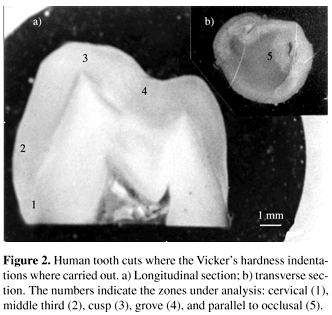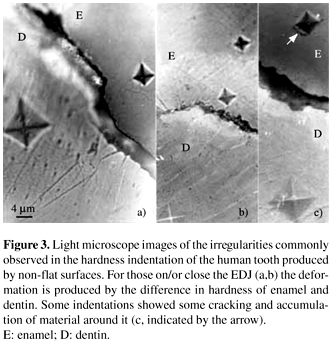Hardness of human tooth, both in enamel and dentin, has been measured at different sites using a Vicker's diamond. In this work we show that these values are almost constant all along the enamel and dentin thicknesses. Indentations were done from outer enamel surface to inner dentin layer, going through the enamel-dentin junction, both in transverse and longitudinal samples. Geometrical well-shape indentation uniformity was checked both with light and with scanning electron microscopes, and the chemical composition of the tooth was analyzed with characteristic X-ray energy dispersive spectroscopy. Hardness measurements were in the range from 270 to 360 VHN for enamel and 50 to 60 VHN for dentin. Cervical zone in longitudinal section showed the lowest value while in transverse sections the highest. All the hardness values were statically significative. Tour results indicate that the difference between enamel and dentin hardness has nothing to do with the content of Na, Cl and Mg, but the percentage of organic and inorganic materials in enamel and dentin.
microhardness; chemical composition; human tooth; enamel; dentin










